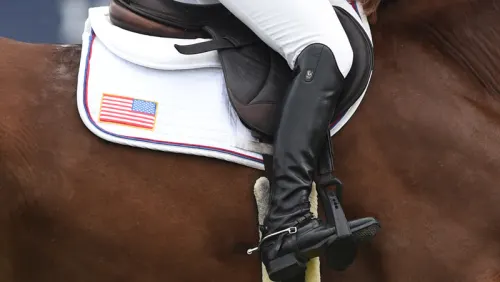At a press conference this morning in Washington, D.C., the leaders of the American Horse Council unveiled their new study of the economic impact of all kinds of horses in the United States. It was the first such study they\’d commissioned since 1996.
The study, conducted by Deloitte Consulting LLP in 2004, shows that there are approximately 9.2 million horses in the 50 United States (and 33 in the District of Columbia), and they\’re owned by approximately 1.96 million people, with another 2 million people associated with their care or competition as family members or volunteers. (That number doesn\’t include all the other professionals or service providers associated with horses, from jockeys or riders, to veterinarians and farriers, grooms, or tack makers or suppliers.)
The survey\’s authors noted that the big difference between this study and the one they also did eight years ago is that it\’s not as “racing-centric.” That is, the previous survey focused primarily on racing, as that\’s the horse sport with which the public is most aware and, at the time, was the primary interest of the AHC\’s leaders and staff.
This time, the authors claim, “With the largest sample size ever captured [some 400,000 respondents] this report is the most comprehensive economic-impact study ever issued on the U.S. horse industry.”
Here are some numbers:
o The top six states in horse population are: 1. Texas (978,822); 2. California (698,345); 3. Florida (500,124); 4. Oklahoma (326,134); 5. Kentucky (320,173); 6. Ohio (306,898).
o No other states exceed 300,000 horses. But 10 states are home to between 200,000 and 281,000. They are (in declining order): Missouri, North Carolina, Pennsylvania, Colorado, Washington, Virginia, Michigan, Tennessee, Indiana and New York.
o Another eight states are home to fewer than 50,000 horses (in declining order): Maine, Massachusetts, Vermont, New Hampshire, Alaska, Delaware, Hawaii and Rhode Island (with just 3,509).
ADVERTISEMENT
o One caveat on these numbers is that, for simplicity\’s sake, the state in which horse reside was determined by where their owner resides, not by where the horse is stabled.
o Of the 9.2 million horses, the largest single breed is—no surprise—Quarter Horses, with 3,288,302. Second is Thoroughbreds, with 1,291,807. An all-inclusive “other horses” accounts for the remaining 4.6 million horses.
o The study notes that the terms “Quarter Horse” and “Thoroughbred” shouldn\’t be taken completely literally as, obviously, they didn\’t check the pedigrees. An unknown number probably only have one breed or the other (or both) somewhere in their pedigree.
o Of these horses, 844,531 are used for racing (559,322 Thoroughbreds and 127,720 Quarter Horses) and 2.78 million are used for showing, a term that takes in most kinds of non-racing competition. The most horses—3.9 million—are used for recreation.
o All of these horses have a substantial effect on the economy. They account for $39 billion in direct annual economic effect (meaning goods and services bought directly for use on or with horses). The largest single category of direct effect is horse-related services, like boarding and training, at $9.48 billion. The next-largest category is capital expenses (equipment and structures), at $8.2 billion per year.
o Horses also account for $63 billion in indirect and induced effects, which are mostly purchases made by suppliers or people employed by suppliers. (For instance, a saddle maker has to buy leather and equipment, a feed producer needs to buy corn and molasses, a trailer manufacturer needs to buy steel and aluminum and pay employees to build the trailers.) The total direct and indirect effect is $102 billion per year.
The study adds: “Racing, showing and recreation all generate between $10 billion and $12 billion in direct impacts. This is particularly important considering that the racing segment is commonly the only industry segment for which significant economic activity is generally associated.”














